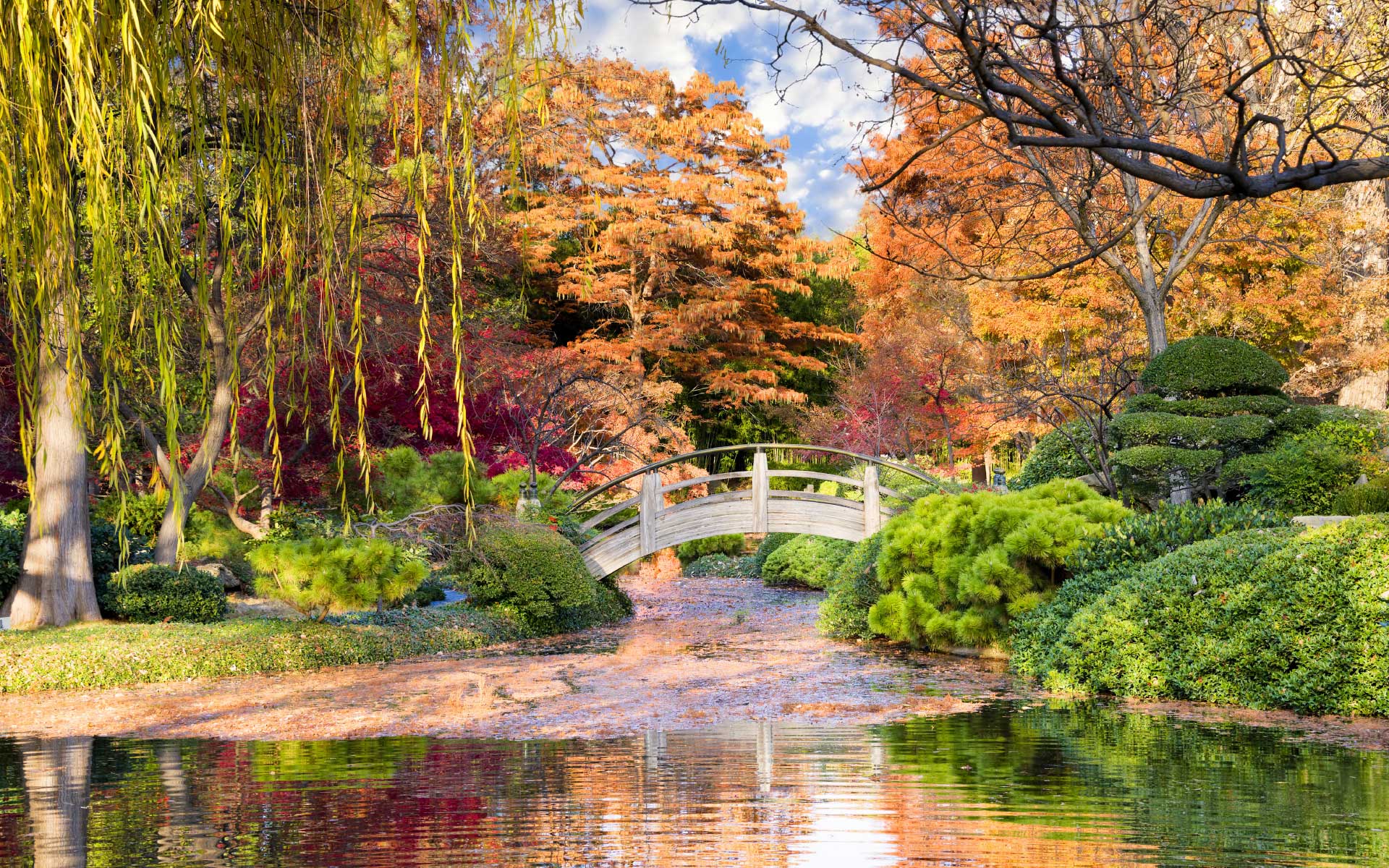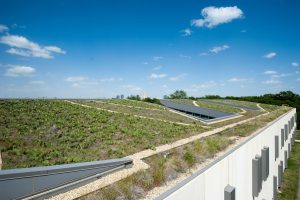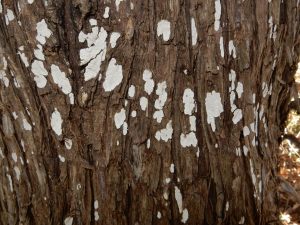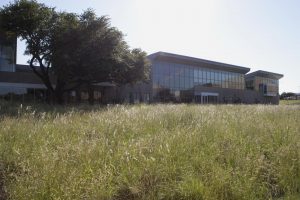Last updated 19 April 2024
History of Eclipses
Eclipses have captivated humanity for millennia, with records of their observation and prediction stretching back thousands of years. The term ‘eclipse’ originates from the Greek word ekleípō, meaning to forsake a usual place or failing to appear. Among the earliest documented evidence of this fascination are inscriptions on ox bones unearthed in Anyang, China, dating back to 1400-1200 B.C.E.

146 years ago on July 29, 1878, was when the last total solar eclipse graced the skies over Dallas-Fort Worth. While the Texas Panhandle area will witness the path of totality for the eclipse on April 12, 2045, DFW won’t experience it again until July 9, 2317.
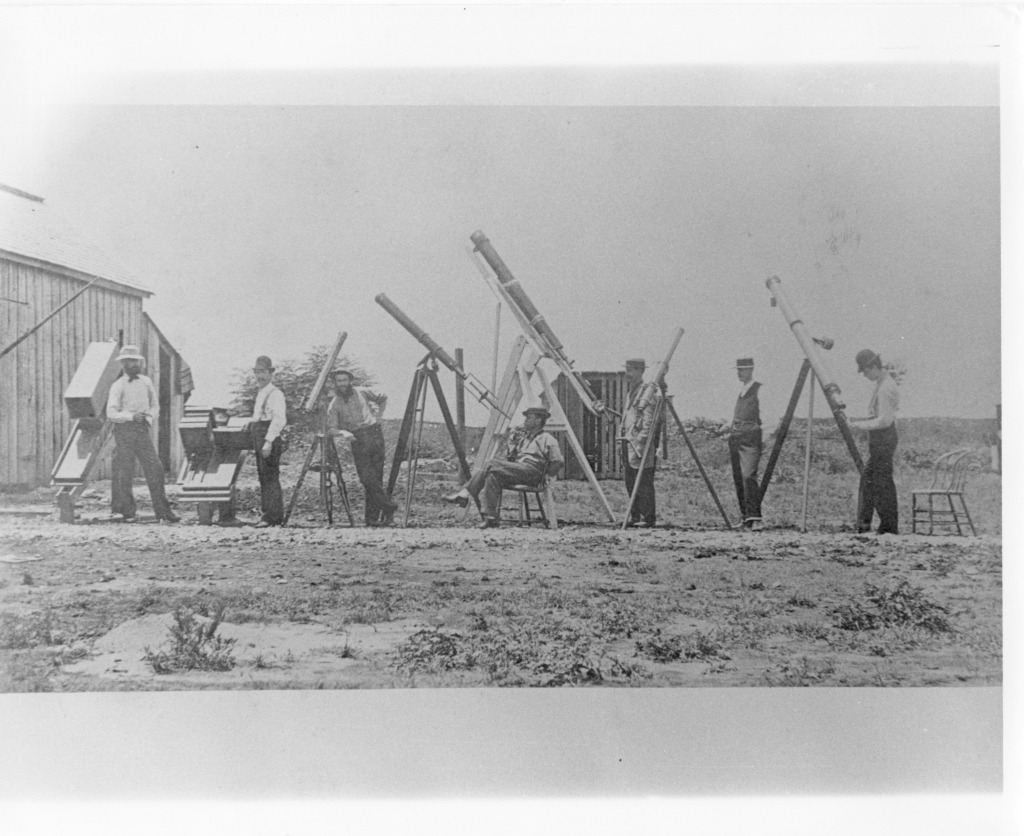
This makes the recent eclipse truly a once-in-a-lifetime event for the DFW area. The Fort Worth Botanic Garden was delighted to collaborate with the Fort Worth Museum of Science and History to host the Eclipse in the Garden event, providing 4,340 guests with a unique opportunity to witness this celestial spectacle.
Community Science Projects
Citizen (or Community) Science Month, observed annually in April, serves as a month-long tribute to citizen science. During this time, individuals from diverse backgrounds actively participate in research endeavors by gathering data, analyzing findings, and contributing to solutions for significant scientific challenges. The Research team thought it was a fitting opportunity to participate in several community science projects during the total solar eclipse on April 8th, 2024.
Natch Azure, Herbarium Digitization Technician, created several informative handouts for eclipse day. These materials were designed to educate the public about eclipses and encourage their participation in community science initiatives. You can download these below! Email herbarium@brit.org for Spanish versions.
Eclipse Soundscapes
Eclipse Soundscapes Project, funded by NASA Science Activation, delves into the impact of eclipses on life on Earth. This project revisits a pioneering community science study conducted during the total solar eclipse of August 31, 1932, led by William M. Wheeler and others. Gathering nearly 500 personal observations from the general public, naturalists, and game wardens, the study documented wildlife sounds and responses during the eclipse. More information about this study can be found HERE.
Sheryl Schickedanz, FWBG Education Program Manager, spearheaded the application for the Fort Worth Botanic Garden to become an Eclipse Soundscapes Data Collector. With the application approved, FWBG received AudioMoth devices to position throughout the garden.
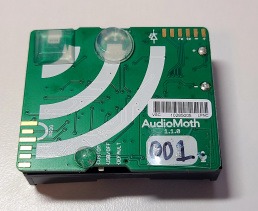
Situated within an urban environment, the Fort Worth Botanic Garden offers a large green space that provides a unique opportunity to capture animal and insect noises. With over 850 species observed on iNaturalist, it serves as a sanctuary for wildlife amidst the city’s hustle and bustle.
On Saturday, April 6th, our Research Admin Assistant, Erin Flinchbaugh, deployed the AudioMoth devices in the South Woods area and Japanese Garden. These locations were carefully selected for their minimal human noise and traffic, potentially fostering an increase in nearby wildlife activity.
The devices remained undisturbed, recording ambient sounds until their retrieval on Wednesday, April 10th. The SD cards containing the WAV files were then dispatched to the Eclipse Soundscapes Project team for analysis.

Our research team has since acquired copies of these audio files and started analyzing using the Kaleidoscope program. We anticipate sharing excerpts of this captivating audio, along with our team’s insights, so be sure to revisit this page for updates!
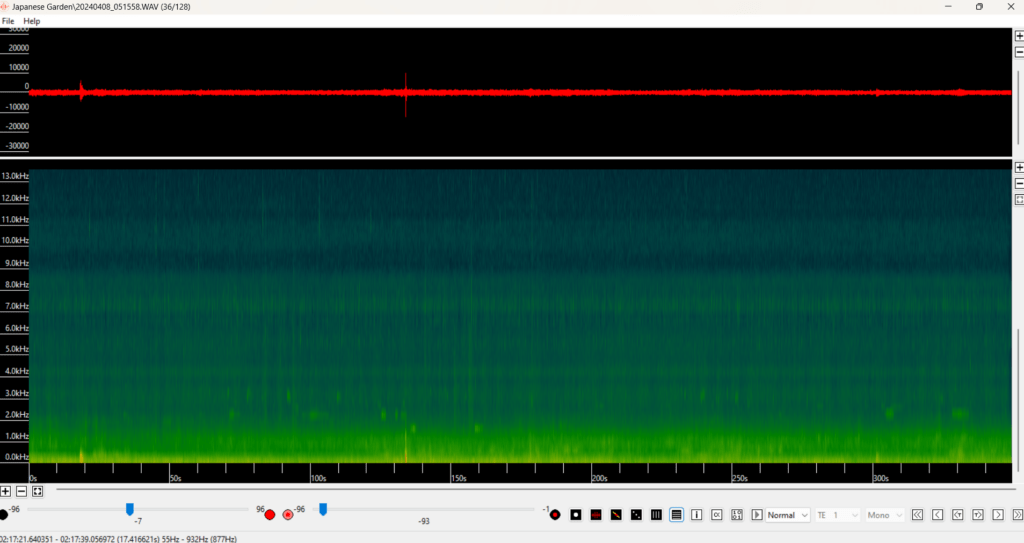
Monday, April 8th, 2024
Eclipse Start 12:22 PM CDT
Total Eclipse Start 1:40 PM CDT
Maximum Eclipse 1:41 PM CDT
Total Eclipse End 1:42 PM CDT
Eclipse End 3:01 PM CDT
Duration of Totality – 2 min, 33 sec
On eclipse day, our Research team and volunteers dispersed to three different locations across the FWBG campus. Their mission was to collect data using the GLOBEObserver and Sunsketcher apps, along with gathering UV data and making observations of plants and wildlife. This data collection effort began at the start of the eclipse at 12:22 PM and continued until its conclusion at 3:01 PM.
Japanese Garden team: Rachel Carmickle, Kay Hankins, Austin Brenek
North Vista team: Erin Flinchbaugh, Brooke Best, Nancy Haubert, Juan Cordova, Rowan Grassi
Pollinator Pathway team: Tiana & AJ Rehman, Mary Keller, Ashley Bales

GLOBEObserver
The GLOBEObserver app serves as a year-round community science initiative, providing individuals with the opportunity to contribute data on various aspects such as clouds, mosquitoes, land cover, and trees. During total solar eclipse, a new app feature was introduced, allowing the public to submit temperature, cloud coverage, and land coverage data from their observation locations.
Data collected through GLOBEObserver can help researchers to study the effects of eclipses on the atmospheric conditions and significantly enhance our understanding of how solar-powered processes are influenced by celestial events.
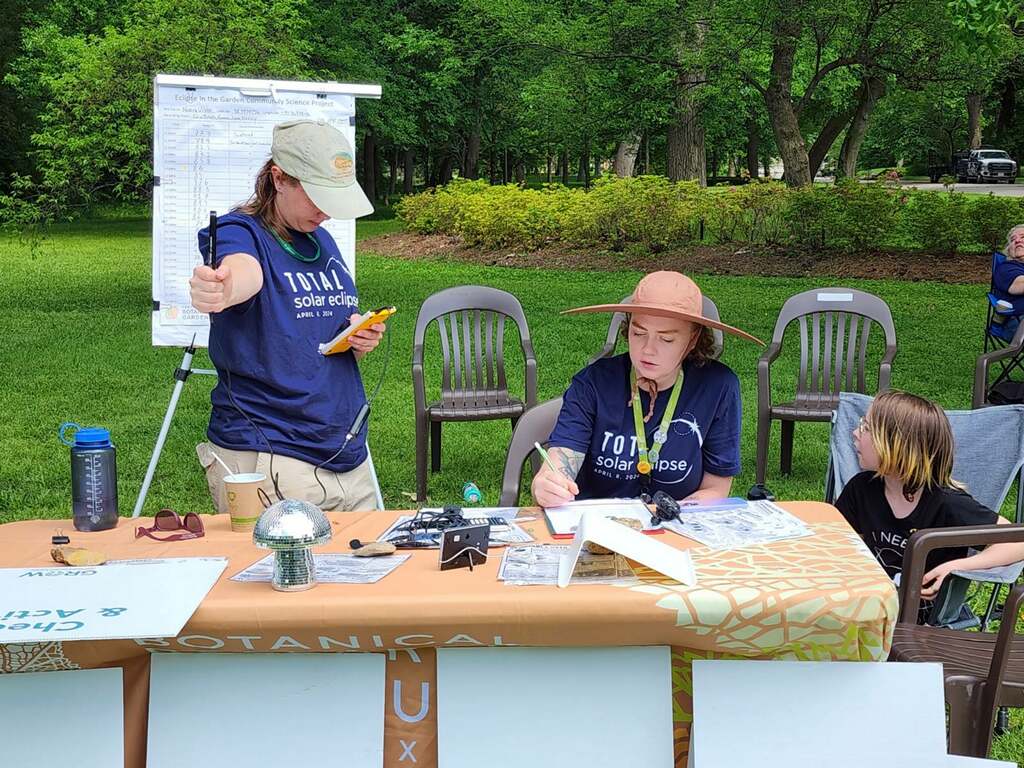
The temperature fluctuations observed by each of the three teams differed significantly throughout the eclipse. The Pollinator Pathway team recorded the most substantial temperature change, with a difference of 18.9 degrees Fahrenheit. Prior to totality, the temperature stood at 92.9°F, dropping to 74°F during totality. Conversely, the Japanese Garden experienced the smallest temperature swing, with a variation of 8.7 degrees Fahrenheit. Temperatures started at 83.5°F before totality and reached 74.8°F during totality. We believe that the location of the Pollinator Pathway, surrounded by a parking lot, resulted in the retention of more heat compared to the densely shaded Japanese Garden location.
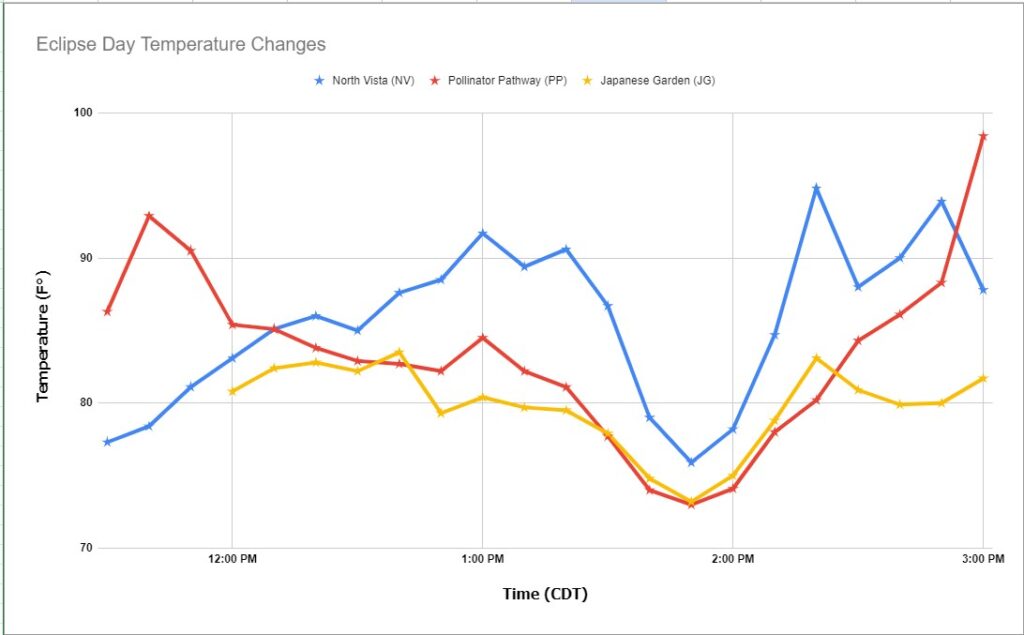
You can now view our air temperature and cloud data along with other community scientists across the country collected for GLOBEObserver on eclipse day on these two maps: Air Temperature & Clouds
SunSketcher
Researchers out of Western Kentucky University, partnering with NASA, asked the public to help them capture photographs of the crescent Sun at times of the second and third contacts during the eclipse through their SunSketcher app.
Data collected through this app will help researchers learn more about the basic shape of the Sun and about internal flows that distort it. Understanding the Sun’s shape aids in studying its interior, and precise measurements of solar oblateness help calculate gravitational effects on inner planets like Mercury!

The SunSketcher team will be posting their findings in the future on their blog here: SunSketcher | News
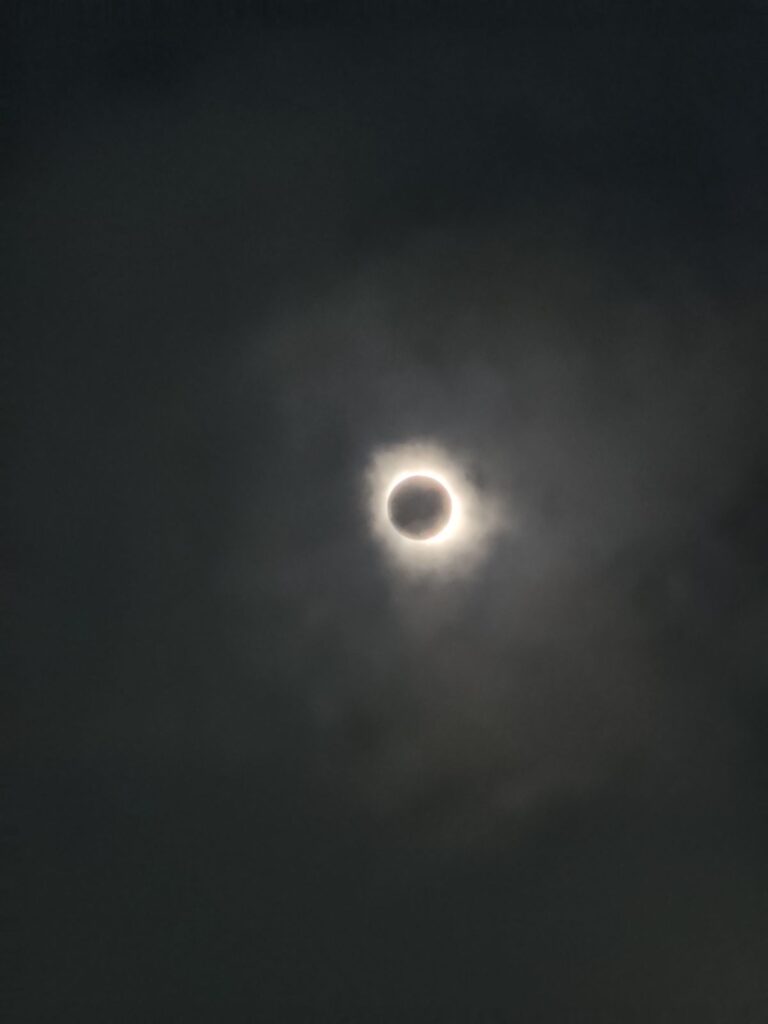
Other Observations
Plants
Botanist have been documenting circadian rhythms of plant species on herbarium specimen labels for decades (examples below).
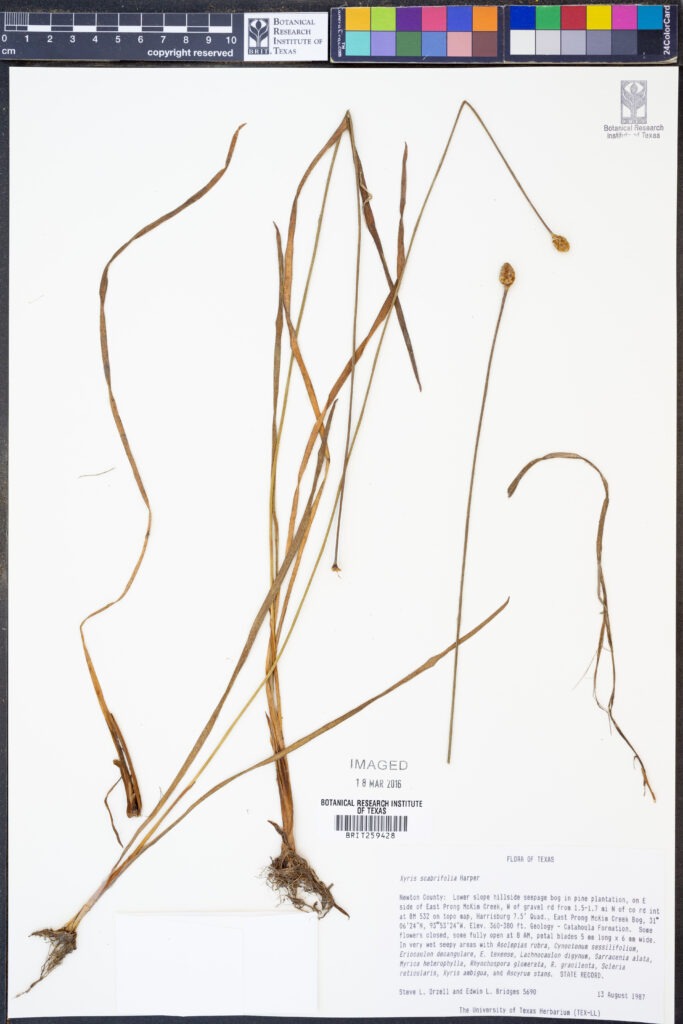
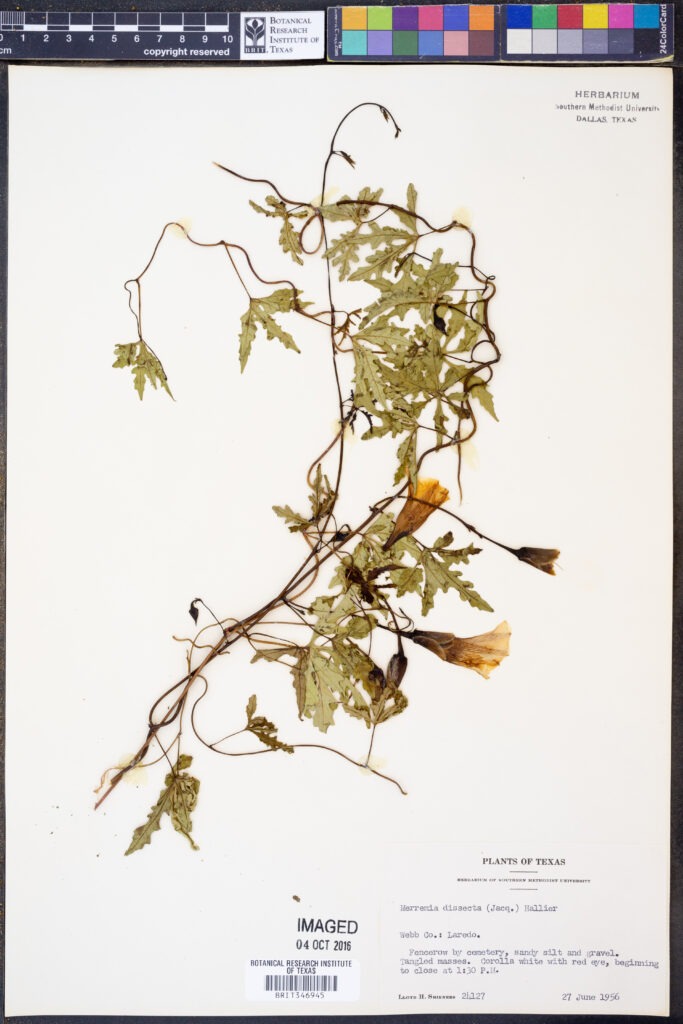
Our team wanted to know how different plant species would respond, if at all, during the eclipse. Would flowers open or close? GoPro cameras and various potted plants were placed at the North Vista and Pollinator Pathway locations to document these responses. The species included were Datura sp., Oxalis sp., Oenothera speciosa, and Maranta sp. Do you see any movement in the timelapse below?
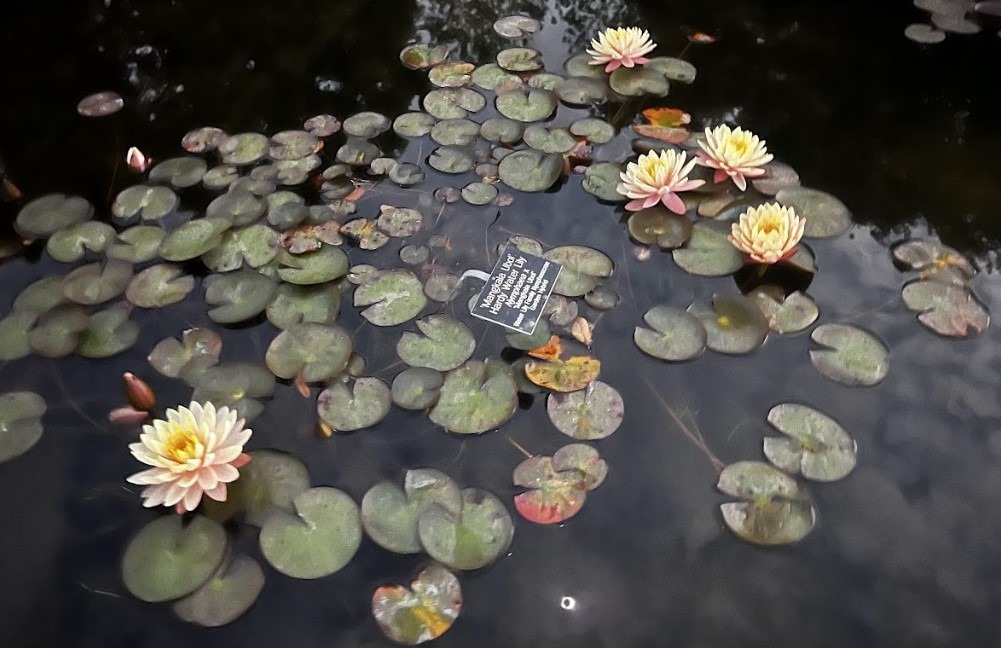
Wildlife
Observations from the Japanese Garden:
1:22 PM Cricket frogs called briefly
1:30 PM Cricket frogs singing (sustained)
2:00 PM Pond turtles had gone away from their sunning perches
2:08 PM Turtles returning to sun
2:42 PM Crickets frogs chimed a few times
Goats
A few days before the eclipse, the garden introduced goats and sheep to the Native Texas boardwalk as part of a separate project (more here). To monitor their behavior during the eclipse, a GoPro camera was set up, capturing their activities throughout the day. A timelapse video showing their movements will be released shortly. Interestingly, personal observations revealed that the goats opted to rest or sleep during totality. Stay tuned!
Butterflies
During the Butterflies in the Garden event, hundreds of butterflies from various parts of the world were housed inside our conservatory from March 1st to April 14th. This provided a unique opportunity to observe their behavior during the eclipse. Joyce Fethke-Block, Conservatory Collections Specialist, observed that during totality, the butterflies didn’t roost but instead ceased flying and remained very still. Videos captured will soon be available. Stay tuned!
Herbarium Collections Manager, Ashley Bales, presented our overall findings for the eclipse at April’s Armchair Botanist Forum. The recording can be viewed below.

